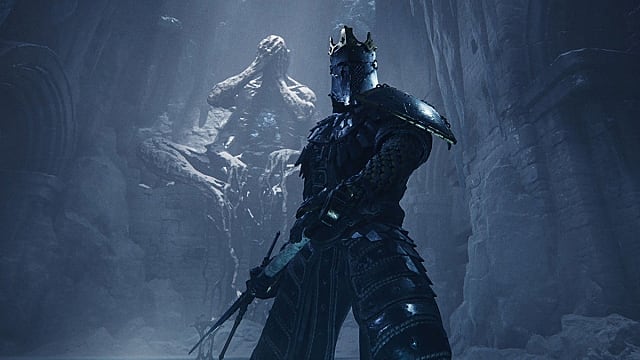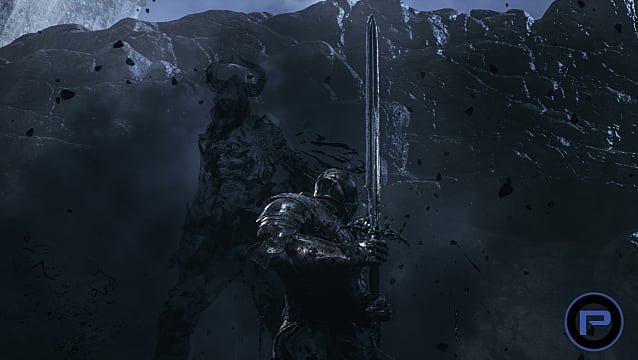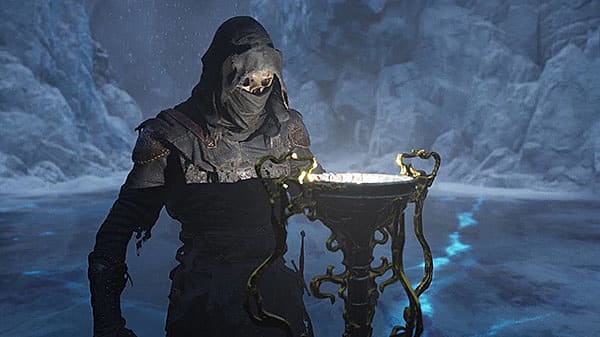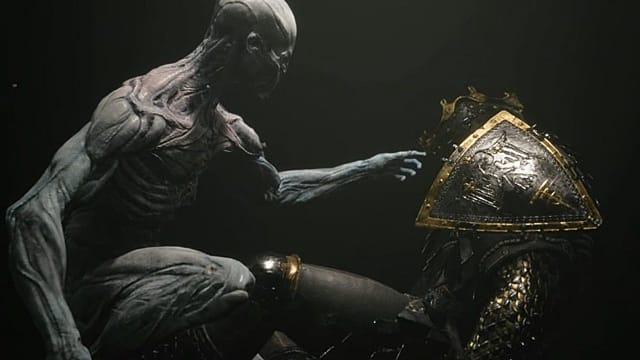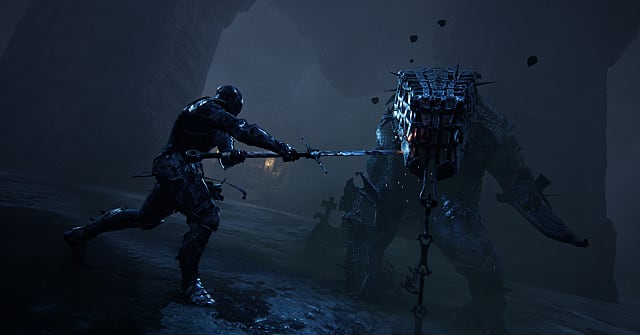This game is an interesting amalgamation of Souls combat and systems, and traditional gothic imagery and themes bound up in a gritty fantasy world. It’s at times frustrating, obtuse, and overwrought, and at others, it’s a thing of beauty — intuitive and demanding and mysterious.
Here are my impressions from the recent open PC beta.
Solid Systems
Mortal Shell’s gameplay both is and isn’t typical Souls-like fair. You spawn at a set location, fight until an enemy surprises you to death, come back to your lost tar (read: souls), and repeat until you reach the game’s stand-in for bonfires. Dodge rolling is still one of your best defensive options, and your attacks are mixes of light and heavy variants.
On the other hand, there is no option to equip a shield. Spamming attacks doesn’t stun-lock every enemy in the game. Stamina is always in limited supply. And you have one chance to come back after death but at great risk to yourself.
There’s more Bloodborne and Sekiro DNA in Mortal Shell than there is Dark Souls. You’re incentivized to be aggressive, as you’ll be overwhelmed if you don’t take the fight to your enemies.
Unlike something like Sekiro, however, combat felt heavy. Even the weakest enemies take more than a few hits to take down, and recovery from attacks was slow. There also appeared to be an optimal timing for each swing of the weapon. Sometimes I would attack quickly and with purpose, other times, the game felt unresponsive to my inputs.
Enemy feedback was a little lacking, too. The hitstun you expect out of a greatsword hit wasn’t there, and some enemies didn’t recoil at all, as if the weapon went clean through them. For that reason, even though I wanted to be aggressive, I had to be cautious with how I engaged lest I took two thumps on the head.
Another reason to measure your aggression in the Mortal Shell beta was the lack of resources. There were almost no healing items, and the ones I did find healed slowly over time, meaning if I went in too hard, I’d find myself needing to retreat to wait for my health to regenerate.
Instead of an Estus Flask, Mortal Shell’s biggest source of health is its parry. So long as you have a bar of Resolve, a meter you fill by dealing damage and killing enemies, a successful parry will instantly refill about a quarter of your health. Parrying without Resolve will send your enemies reeling, but won’t give you anything but a free hit or two.
If there was no opportunity for escape, there is a panic button built into Mortal Shell: harden.
Your body becomes stone for a few seconds, interrupting any animation you’re in and staggering most enemies when they hit your hardened flesh. It’s not something you can rely on every time, as the ability’s cooldown increased based on how long you remained in a hardened state.
Dying was particularly punishing in the beta, as well.
There were only two respawn points: one at the beginning and one at the entrance of the second area. You could do what most Souls players do once they have a handle on the enemies — run past everything — but if you choose to fight, be aware that one mistake is all it takes to send you straight back to the starting block.
Your Shell
There’s don’t appear to be any stats or character customization in Mortal Shell. Instead, you play as a featureless, faceless thing that inhabits the corpses of warriors long past. These become the “mortal shell” you inhabit between deaths.
We could try out two shells in the beta: a fully armored knight with a greatsword and a thief-looking fellow with a hook and dagger.
The greatsword was deceptively short, and I was consistently running out of stamina with the hook and dagger. Though that was due in large part to my need to play well than anything else. You may find that your methods are different.
You could swap between shells and weapons at the beginning of the second area: a crypt with poison-clawed ghouls and undead swordsmen. In the first area, a forested ruin, you started as the knight, though you could come back as the roguish type if you chose to.
Instead of stats, each shell had a tree of upgrades you can spend tar and Glimpses on, the latter being a much rarer consumable not immediately lost on death. Most upgrades were locked in the beta, but the ones we could see were quite strong, with a cost to match.
I mentioned earlier that you had two chances to succeed per life, and that’s possible because of the shells.
When you “die” the first time, your blank slate character is flung from the shell it’s in with a tiny health bar and limited movement options. You must make it back to your shell to get combat-ready again.
You come back at full health if you make it back to your shell, but it’s very likely surrounded by the enemies that killed you. If you die again, it sticks and you get sent back to respawn and must toil again.
Final Notes
There wasn’t much I didn’t like in the Mortal Shell beta, but I was surprised by how small each of the two areas felt.
There was only one (and well-executed) boss fight. If I’d learned the game’s quirks faster, I don’t think it would have taken my much more than an hour to complete. That’s including fighting every enemy in both areas and beating said boss.
There was a nice enemy variety, and what little I could see of an inaccessible snow area looked good, as well.
I did think the controls could be a little more responsive, and the game could do with a bit more color generally. I’m also concerned that there won’t be much in the way of build variety, as there was no obvious way to continue upgrading your shell past a certain point, and each shell came with its own armor that seemed aesthetic only. However, we will see once the game actually releases.
The last thing I want to mention, is that the level design reminded me more of Nioh than a traditional Dark Souls game. There wasn’t much verticality to be had in Mortal Shell, though there were plenty of death pits that went straight down.
The playable space was flat for the most part. I felt like I was progressing forward no matter where I went, but part of the charm of a Dark Souls game is the movement up and down, either into the skies or the depths of the earth. This beta had neither, and that is something I’d very much like to see different in the full game.
I’m excited to try Mortal Shell when it releases later this year, despite a few reservations. We’ll see if there’s more to the game than the core mechanics and designs we saw in the short time we’ve had with it so far.
